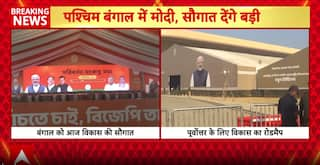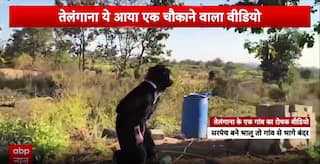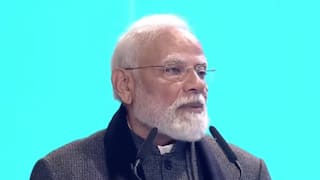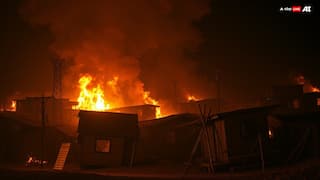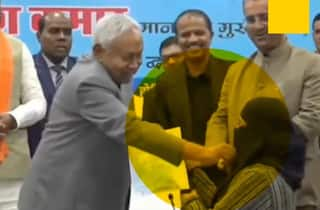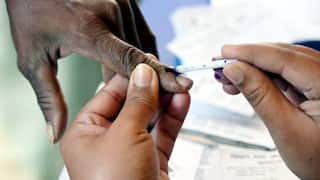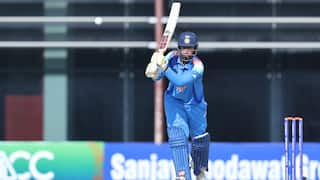What Is Costochondritis? Know About The Condition Chhavi Mittal Is Diagnosed With
Costochondritis is a condition characterized by inflammation of the cartilage that connects your ribs to your breastbone (sternum).

New Delhi: Actress Chhavi Mittal recently opened up about her 'new' illness after surviving cancer and said that she has been diagnosed with costocondritis, which is an injury to a chest cartilage. Taking to her Instagram handle she talked about it and informed her fans about her condition. Chhavi said, "Naya wali beemari layi hoon market mein it’s called costocondritis. Fancy no? The probable cause could be radiation or a side effect of the injection I took for osteopenia (a condition with low BMD) or it could be incessant cough (which I had a few days back) or a combination of one or more or all. I have pain while breathing, or using my hand, or arm, or lying down, or sitting, or laughing or pretty much everything."
"No, I’m not always positive about it, but I’m rarely negative. So, holding my chest in my hand, I went to the gym (my happiest place) coz u know what? We all get knocked down, but do we get up again? Well I do! For anyone who needs to hear this.. I know ur suffering in some way or the other.. but ur not alone! And this too shall pass," she further added.
View this post on Instagram
To know more about this condition, ABP Live spoke to experts who explained its symptoms, causes and prevention.
Dr Varsha Bhatt, MD Medicine, Fellowship Rheumatology, Consultant Rheumatologist, Apollo Clinic Wanowrie, Pune said, "Costochondritis is a condition characterized by inflammation of the cartilage that connects your ribs to your breastbone (sternum). It typically causes chest pain and discomfort."
Statistics show 34% of the chest pain cases are known to be musculoskeletal in nature and because of costochondritis. It is a deep-seated sharp shooting pain associated with breathing, coughing, or moving of the arms, according to Palak Dengla, Chief Physiotherapist, Aster RV Hospital.
Mentioning the symptoms of costochondritis, Dr Varsha Bhatt said:
- The most common symptom of costochondritis is chest pain that may be sharp, stabbing, or aching. The pain is usually felt on one side of the chest, but it can also be felt on both sides.
- The pain is often worsened by movements that involve the chest area, such as deep breathing, coughing, sneezing, or physical activity.
- The affected area may be tender to the touch. Pressing on the cartilage around the sternum and ribs may elicit discomfort.
- The pain may sometimes radiate to the arms, shoulders, or back, which can lead to confusion with other conditions like heart-related issues.
- The pain associated with costochondritis is typically localized and doesn't spread or radiate extensively. It also tends to come and go, often lasting for a few weeks to a couple of months.
- Deep breathing may cause discomfort due to the movement of the ribcage and sternum.
- While less common, some individuals with costochondritis might experience mild swelling in the affected area.
Talking about the causes of costochondritis, she said, "The exact cause of costochondritis is not always clear, but it's thought to be related to inflammation of the cartilage that connects the ribs to the sternum. "
It may occur due to:
- Physical Strain or Injury
- Infection: Viral infections like respiratory viruses
- Ankylosing spondylitis causes costochondritis but rheumatoid arthritis only causes it indirectly as it doesn't directly affect cartilage but can damage it secondarily.
- Autoimmune Disorders: Axial Spondyloarthropathy, psoriatic arthritis, and some other autoimmune diseases can cause costochondritis
- Costochondral Junction Abnormalities
Physiotherapy And Costochondritis:
Physiotherapy helps a patient to deal with Costochondritis. In this regard, Palak Dengla shared an incident that happend to one of her patients. "I had seen a Long covid patient in my OPD. He had got costochondritis because of chronic cough. He had severe inflammation set in at the rib junction which was extremely tender on touch. Pain experienced sharp shooting pain during deeper breaths. Despite NSAIDS, he did not experience much of a relief. Finally, he was referred to Physiotherapy department. On assessment, it was found to be costochondritis. He had responded well to Physiotherapy. Maitland glides, Mulligan mobilisations and TENS was given. He felt much better with cold laser therapy and ultrasound as well. His pain disappeared post 7 sessions of Physiotherapy."
Prevention of Costochondritis :
Some of the preventive measures required to be followed as listed by Dr. Swati Sinha, Obstetrics & Gynecology -Senior Consultant, Rosewalk Healthcare By Rainbow Children’s Hospital, Delhi are:
- Maintain a Dry Environment: Ensure that living spaces are well-ventilated and free from excessive humidity. Use dehumidifiers if necessary to prevent the growth of microbes that can trigger inflammation.
- Appropriate Clothing: Dess in breathable, moisture-wicking fabrics to minimize perspiration and the risk of dampness-related issues.
- Regular Exercise: Engaging in regular, gentle exercises can help maintain chest wall flexibility and reduce the risk of inflammation. However, avoid vigorous activities that strain the chest area.
- Balanced Diet: Consume a diet rich in antioxidants and anti-inflammatory foods to boost the immune system and promote overall health.
Timely awareness and action can go a long way in mitigating the discomfort and pain associated with Costochondritis.
Check out below Health Tools-
Calculate Your Body Mass Index ( BMI )











